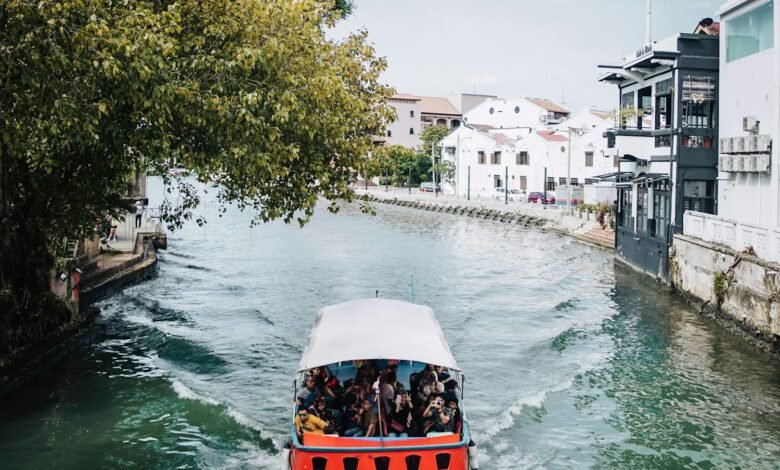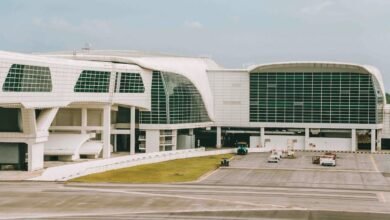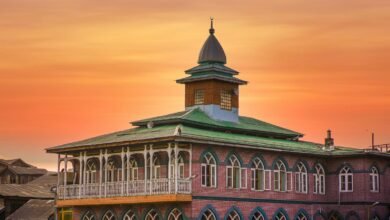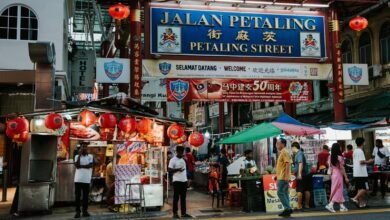
Malacca, or Melaka, is one of Malaysia’s most historic and culturally rich cities. Located on the country’s west coast, this UNESCO World Heritage Site is known for its well-preserved colonial architecture, fascinating history, and a blend of cultural influences from Portuguese, Dutch, and British rule. As the birthplace of Malaysia’s historical development, Malacca offers visitors a glimpse into the country’s vibrant past and its multicultural present.
A Historical Overview of Malacca
Malacca’s history dates back to the early 15th century when it was established as a thriving port and trading hub in Southeast Asia. During this period, it attracted traders from India, China, the Middle East, and other parts of the world. The Malacca Sultanate was a powerful maritime kingdom, but its strategic location made it a target for European colonizers.
In 1511, the Portuguese captured Malacca, marking the beginning of European influence in the region. This was followed by the Dutch in 1641, who ruled for almost 150 years, and later the British in 1824. Each colonial power left its mark on Malacca, contributing to the city’s unique architectural landscape, diverse culture, and rich heritage.
Dutch Square: The Heart of Colonial Malacca
The iconic Dutch Square is often the first stop for visitors exploring Malacca. This vibrant square is home to some of the city’s most famous landmarks, all painted in a distinctive red hue. The Stadthuys, built in 1650, was the official residence of Dutch governors and is considered the oldest surviving Dutch building in the East. Today, it houses the History and Ethnography Museum, offering visitors insight into Malacca’s colonial past and its evolution as a multicultural city.
Nearby is the Christ Church, built by the Dutch in the 18th century. This Protestant church is known for its simple yet striking design, with a large white cross and a clock tower that dominates the square. Inside, the church features Dutch tombstones and old wooden pews, reflecting its historical significance.
Visitors can also admire the Queen Victoria Fountain, a beautifully ornate fountain built in honor of Queen Victoria’s Diamond Jubilee in 1901, showcasing the British legacy in Malacca.
A’Famosa Fort: A Portuguese Legacy
One of Malacca’s most enduring symbols of its Portuguese era is A’Famosa Fort, or what remains of it. Built in 1511 by the Portuguese after they conquered Malacca, the fort was once a mighty structure that guarded the city. While much of it was destroyed by the British, the Porta de Santiago, a small gatehouse, is the only surviving part of the original fort and remains a popular tourist attraction.
Visitors to A’Famosa can imagine the grandeur of the fort in its heyday, with its strategic location overlooking the Malacca Strait, which made it an important military stronghold during the colonial period.
St. Paul’s Hill and Church
Just a short walk from A’Famosa, you’ll find St. Paul’s Hill, home to the ruins of St. Paul’s Church. Originally built as a simple chapel by the Portuguese in 1521, it was later expanded by the Dutch, who renamed it after St. Paul. Today, the church’s roofless remains, ancient tombstones, and panoramic views of the city make it a popular spot for visitors.
At the top of St. Paul’s Hill, a statue of St. Francis Xavier, the Catholic missionary who once used the church as a base for his Southeast Asian missions, stands as a reminder of Malacca’s religious history. The serene hill offers breathtaking views of the city and the surrounding landscape, making it a peaceful and scenic retreat.
Jonker Street: A Vibrant Cultural Hub
One of the most popular areas in Malacca is Jonker Street, located in the heart of Chinatown. Known for its lively atmosphere, Jonker Street is a bustling hub of activity, especially during the Jonker Walk Night Market on weekends. The street is lined with heritage buildings, antique shops, cafes, restaurants, and street vendors selling everything from local handicrafts to delicious street food.
Jonker Street is also famous for its Peranakan (Straits Chinese) culture. The Baba & Nyonya Heritage Museum, housed in a beautifully restored Peranakan townhouse, offers a glimpse into the opulent lifestyle and traditions of the Baba Nyonya community, descendants of Chinese immigrants who settled in Malacca centuries ago and adopted many local customs.
While on Jonker Street, don’t miss the opportunity to sample Nyonya cuisine, a fusion of Chinese and Malay flavors. Dishes like Nyonya laksa, asam pedas, and cendol are popular delicacies that reflect Malacca’s rich culinary heritage.
Malacca River: A Scenic Cruise Through History
The Malacca River played a significant role in the city’s early development as a major trading port. Today, the river offers a scenic and relaxing way to explore Malacca through the Malacca River Cruise. The 45-minute boat ride takes visitors past colorful murals, historical buildings, and quaint riverside cafes.
Along the way, you’ll see notable landmarks like the Kampung Morten, a traditional Malay village where many of the houses are still built in the traditional style, and Villa Sentosa, a small museum showcasing Malay culture and heritage.
The river comes alive at night, with beautifully illuminated bridges and buildings reflecting on the water, creating a magical atmosphere for evening cruises.
Malacca Sultanate Palace Museum
For a deeper dive into Malacca’s pre-colonial history, a visit to the Malacca Sultanate Palace Museum is a must. This wooden replica of the 15th-century palace of Sultan Mansur Shah offers a fascinating look at the grandeur and splendor of the Malacca Sultanate before the arrival of European colonizers.
The museum’s exhibits include royal regalia, historical artifacts, and dioramas that depict scenes from Malacca’s golden age as a powerful trading empire in Southeast Asia.
A Multicultural Heritage: Temples and Mosques
Malacca’s diverse cultural heritage is reflected in its religious buildings, which are a blend of Malay, Chinese, Indian, and European influences. The Cheng Hoon Teng Temple, the oldest functioning Chinese temple in Malaysia, is a stunning example of Chinese architecture and craftsmanship. The temple is dedicated to multiple deities, including Guanyin, the goddess of mercy, and serves as a place of worship for the local Chinese community.
Nearby, the Kampung Kling Mosque is a fascinating mix of Islamic, Chinese, and Hindu architectural styles, with its pagoda-like minaret and intricate carvings. This mosque is one of the oldest in Malaysia and highlights the unique blend of cultural influences in Malacca’s religious architecture.
Conclusion
Malacca is a city where history, culture, and modernity coexist harmoniously. From its colonial landmarks to its vibrant streets and diverse cultural influences, the city offers a unique and enriching experience for visitors. Whether you’re exploring the historical sites, cruising along the river, or indulging in the local cuisine, Malacca provides a journey through time, offering a glimpse into the rich tapestry of Malaysia’s heritage. This charming city is a must-visit destination for anyone looking to experience the heart and soul of Malaysia’s history.



